Garden ponds are a gorgeous outdoor feature that can provide serenity and improve the way your garden looks. Being easy to install, garden ponds have become popular outdoor home features that also have a host of benefits.
The look of the pond will mainly depend on your personal taste and available garden space, but regardless of its size, garden ponds allow for continuous improvement. This will give you the opportunity to add and change so many things in order to make it even more appealing than it is. Just imagine how breathtaking your wine and dine area will look by adding a garden pond to it.
However, one of the best ways to preserve the great look of your pond is to keep it clean.
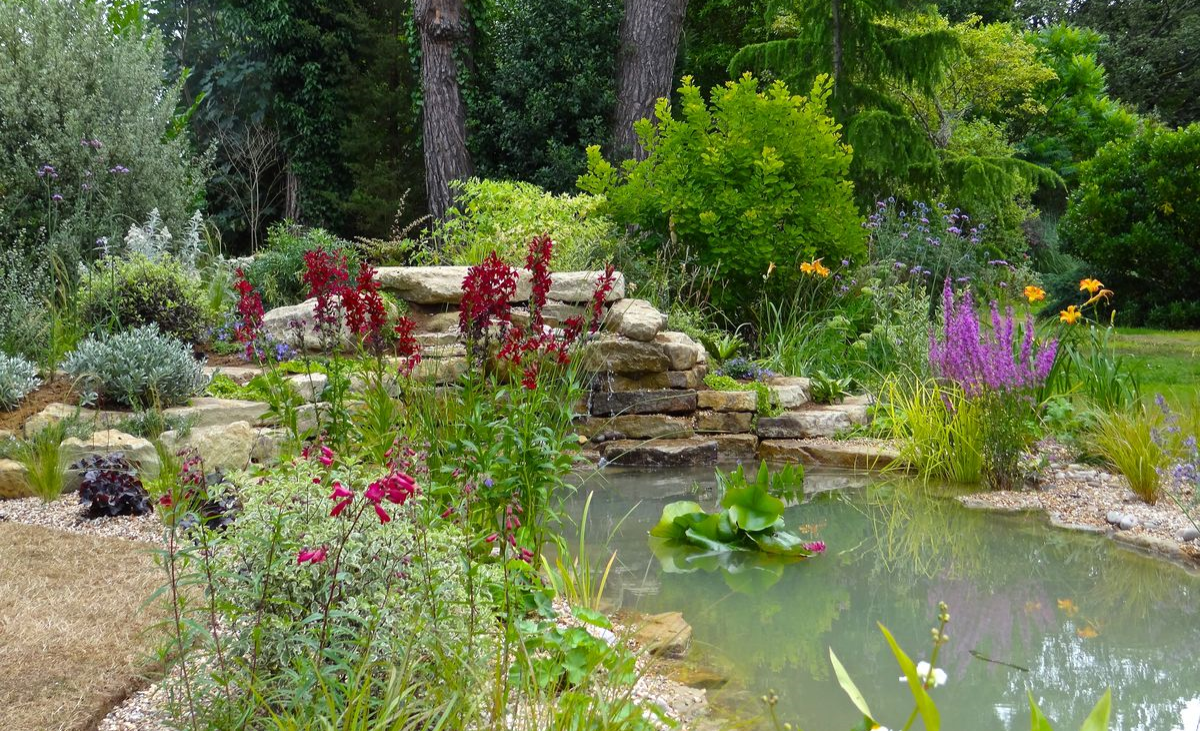
Contents
Ways to Keep Your Pond Clean
Filters
The many dazzling plants, rocks and gravel can certainly draw your eyes, while the sound of a possible waterfall in it can soothe and tickle your ears. However, this perfect image would not be possible if your maintenance system is poor. The easiest way to keep your garden pond crystal clear and clean is with the proper filtration via a pond filter system.
There are three types of pond filters on the market, biological, mechanical and sterilisers.
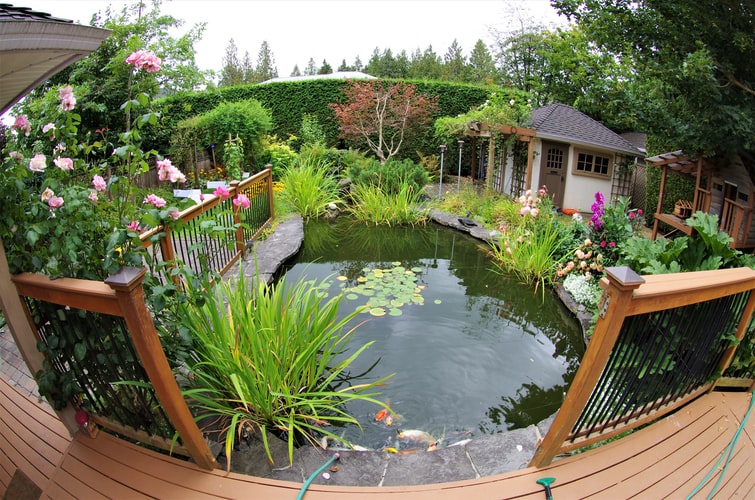
As the name implies, the biological filter is less harmful as it uses bacteria to break down pond wastes, converting them into less damaging compounds. Later on, these compounds can be used as aquatic plant fertilisers.
A mechanical filter, on the other hand, has the ability to trap and remove sediment and debris.
Water sterilisers pass water through a tube with an inside ultraviolet bulb. This UV bulb is designed to kill all living microscopic practices in the pond water.
Biological Filtration
Practice shows that combining a biological filtration system and a quality mechanical filter is one of the most effective ways to filter water. That way, the need of using sterilisers is eliminated and you will provide a natural ecosystem for your pond. But how exactly does a biological pond filtration work?
With the help of a quality pond filter biosystem, the water that has already passed through the mechanical filter enters the bio pond filter through a flexible pipe located near the base of the unit. After it passes the pipe, the water flows through the filter media which is placed inside the unit in order to get rid of the fine and medium-sized particles.
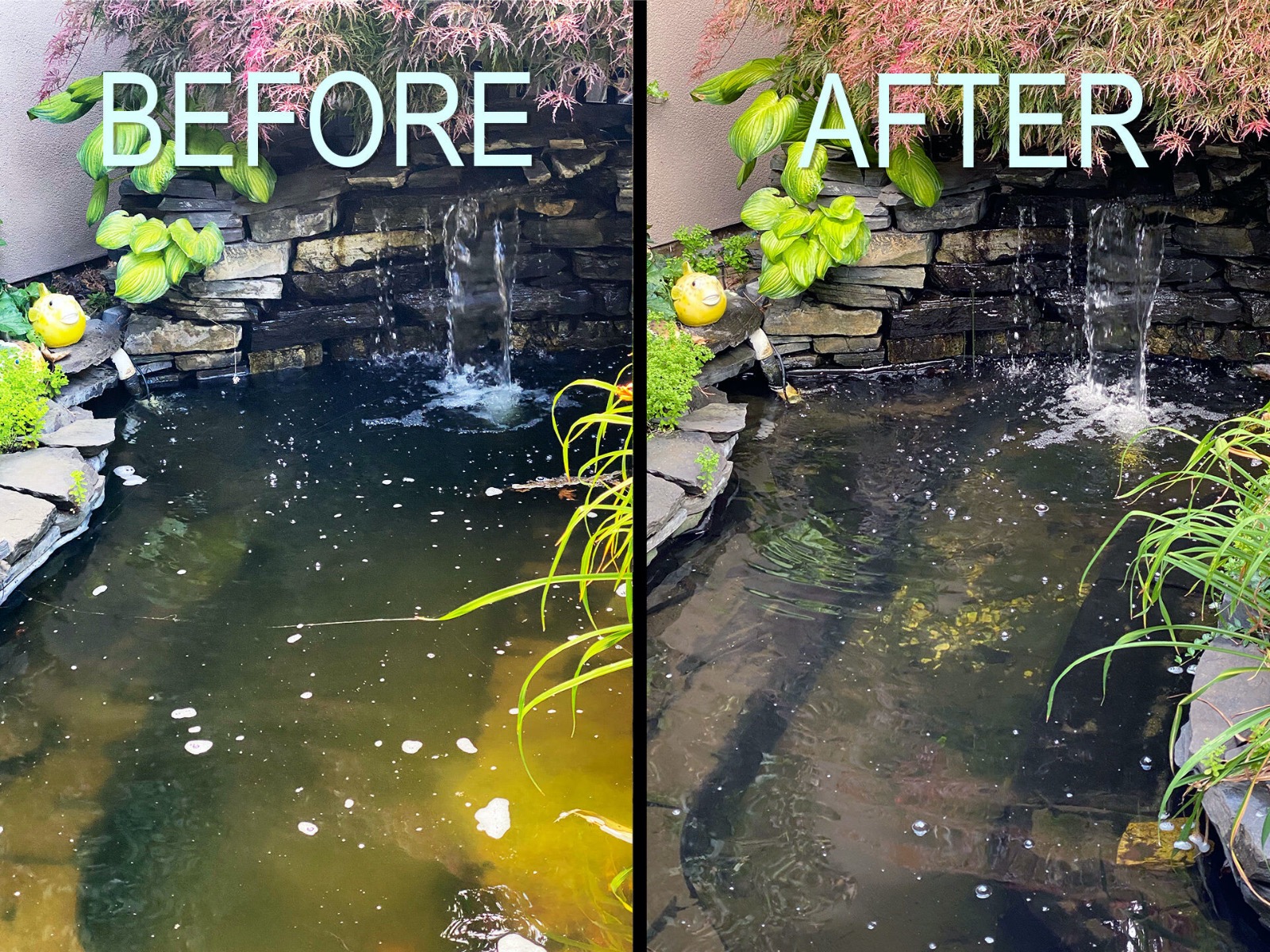
An important thing to know about biological filtration is that nitrifying bacteria can absorb ammonia and turn nitrites into nitrates (the latter are less harmful). Since these bacteria need oxygen to live, it is essential for the water pump to work all the time.
Nowadays, the market is overwhelmed with bio outdoor pond filters ranging in size and shape. You should find one that is quality and proper for the size of your pond. Some of them are so big that they can filter up to 38 000kg of water. In case you have an extremely large pond, you can use multiple large pond filters.
How Often to Clean Pond Bio Filter?
While the mechanical filters should be cleaned as often as you can, biofilters require the opposite. They should be cleaned less often or not at all if the water is prefiltered first. However, the filter sponges of both of these filters need to be cleaned/washed frequently in order to keep their shape and remove muck from the system.
Mechanical Filtration
The main job of mechanical filtration or skimmer pumps is to remove all the floating debris before they sink to the bottom of the pond. There are two main types of skimmers: box and floating skimmers.
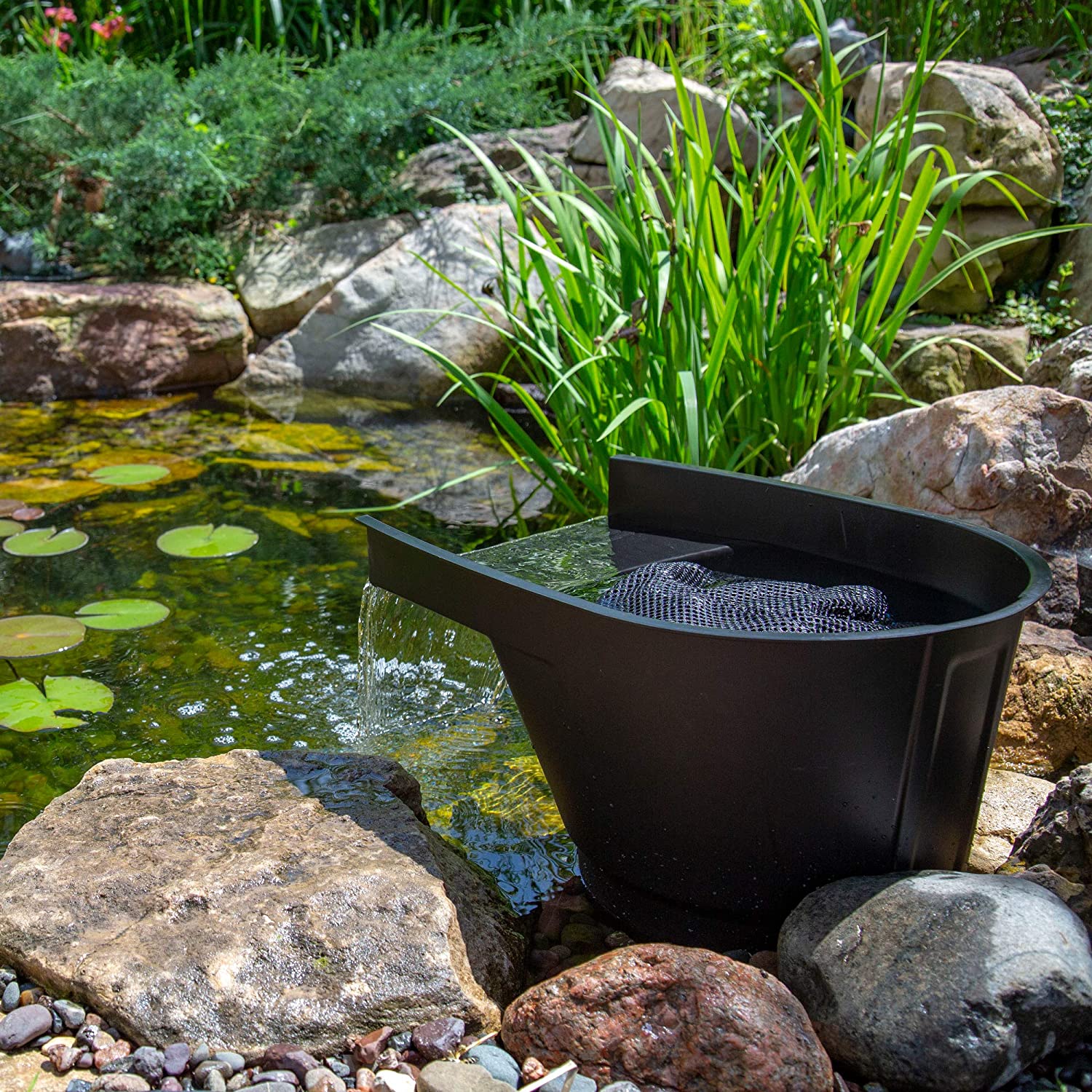
Both of these skimmers filter the water the same way and with the same purpose. However, it seems that the box skimmer is the most commonly used types since it’s easier to maintain and clean.
The box skimmer is available with horizontal and vertical filter mats, but practice shows that the horizontal ones are more effective and easy to maintain. As the name implies, these filter mats lay flat/horizontally, reducing the chance of sagging and losing their shape.
Additionally, it is impossible for these filter mats to clog to the point of preventing water to pass through them, which is a common problem with vertical filter mats.
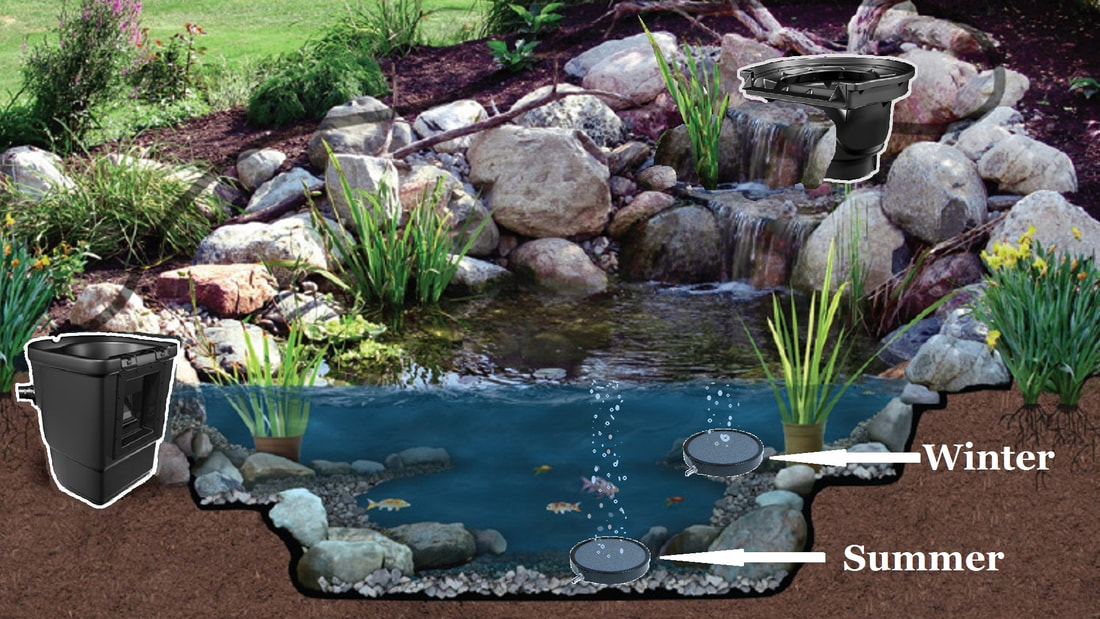
How to Set Up Pond Filter System?
Setting up the filtration system in your pond is not complex and can take from a few minutes to a few hours. It all depends on your specific circumstances and the person setting up the system.










